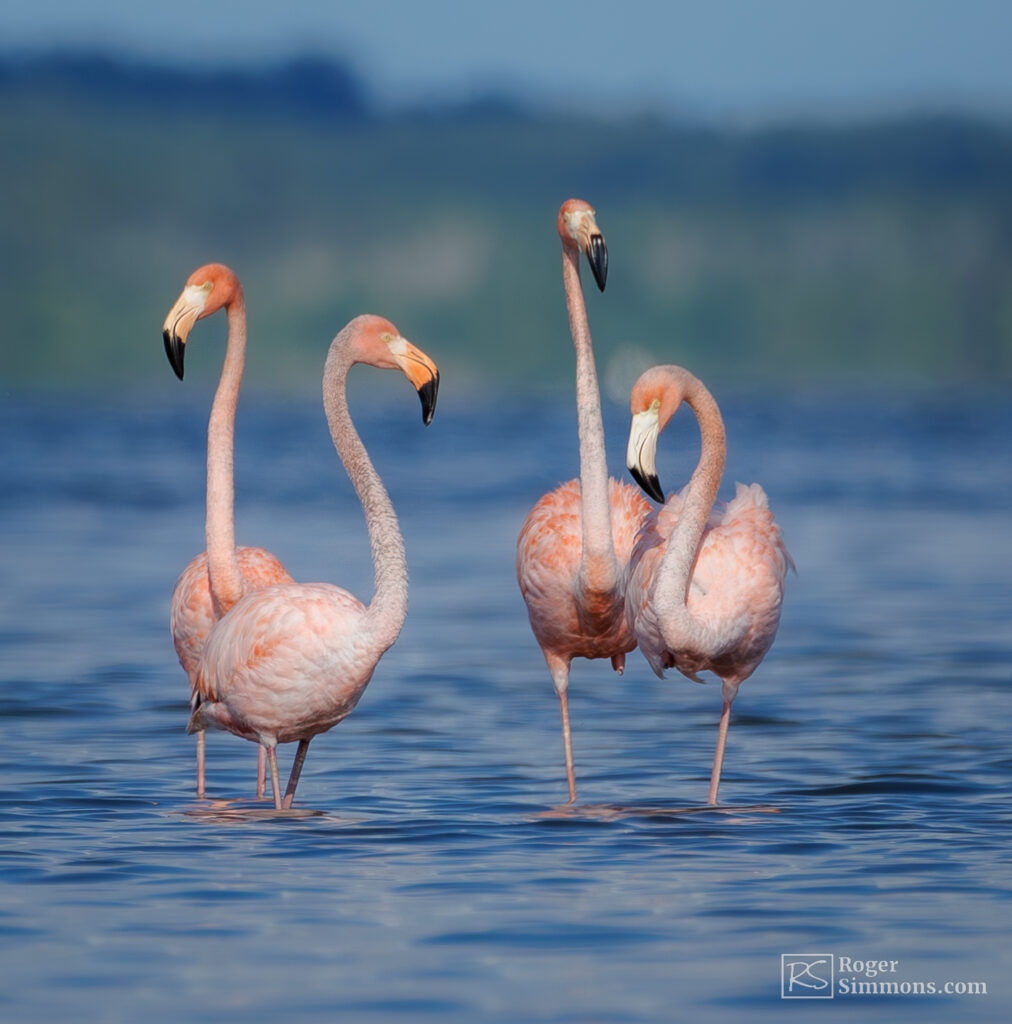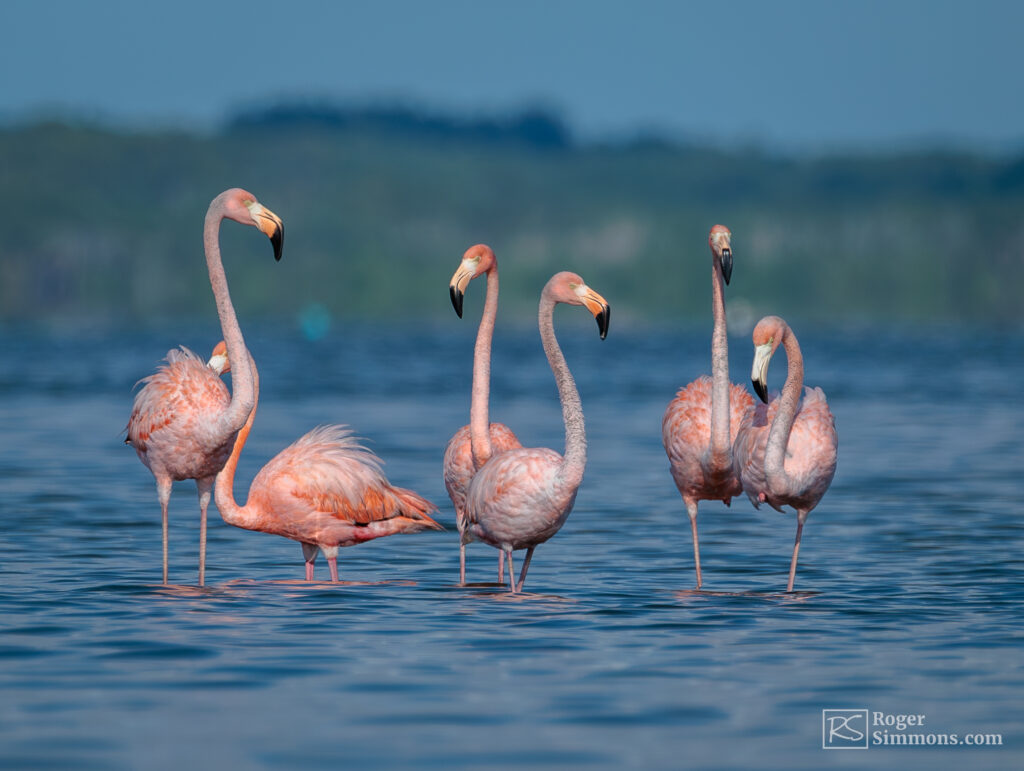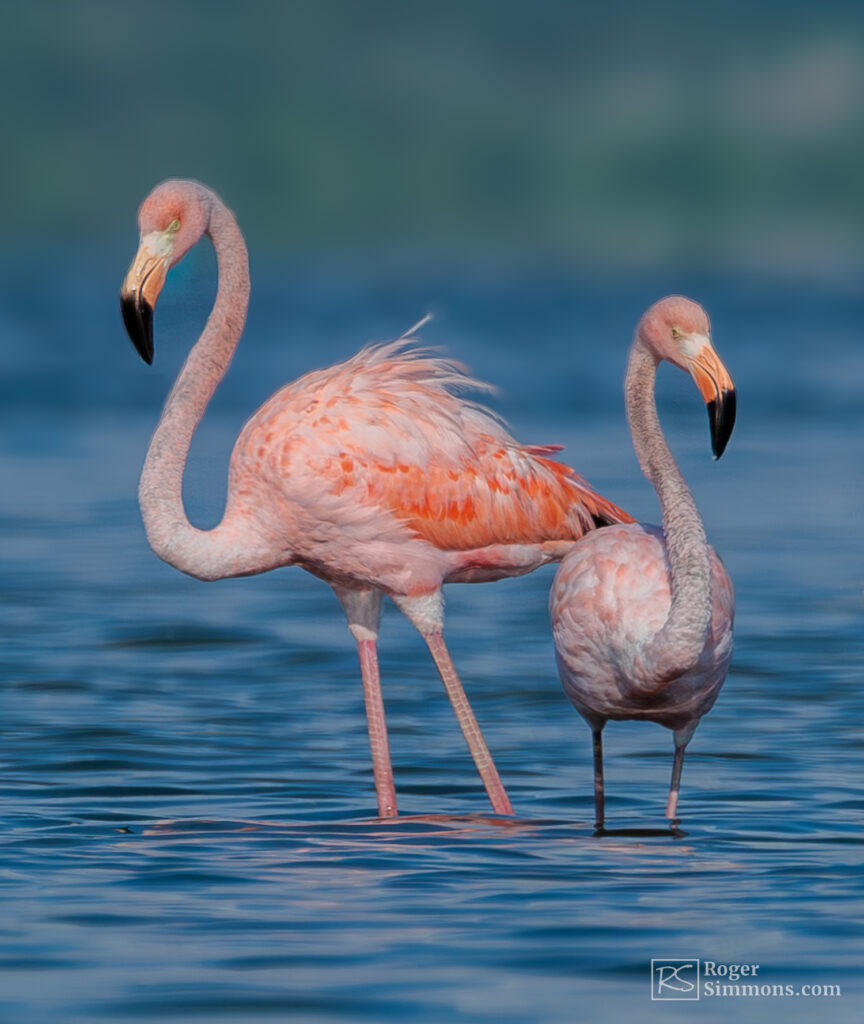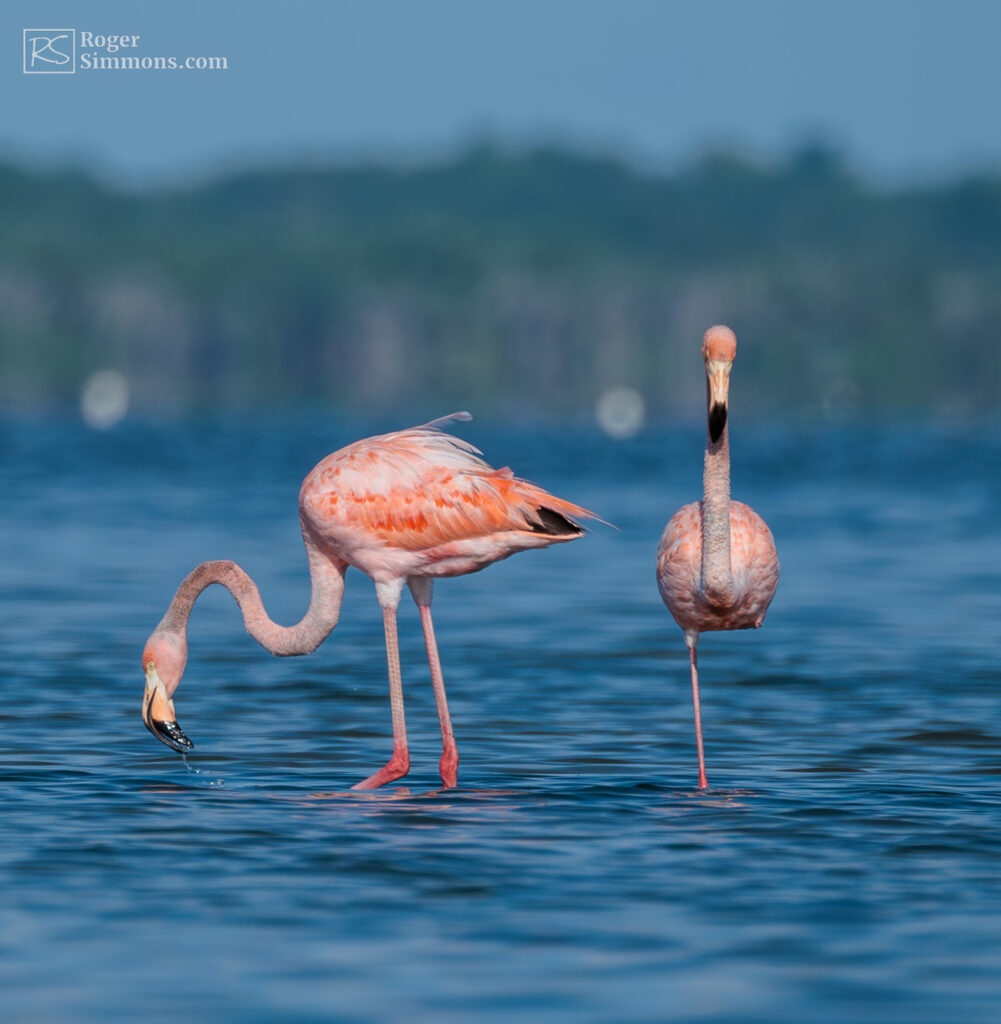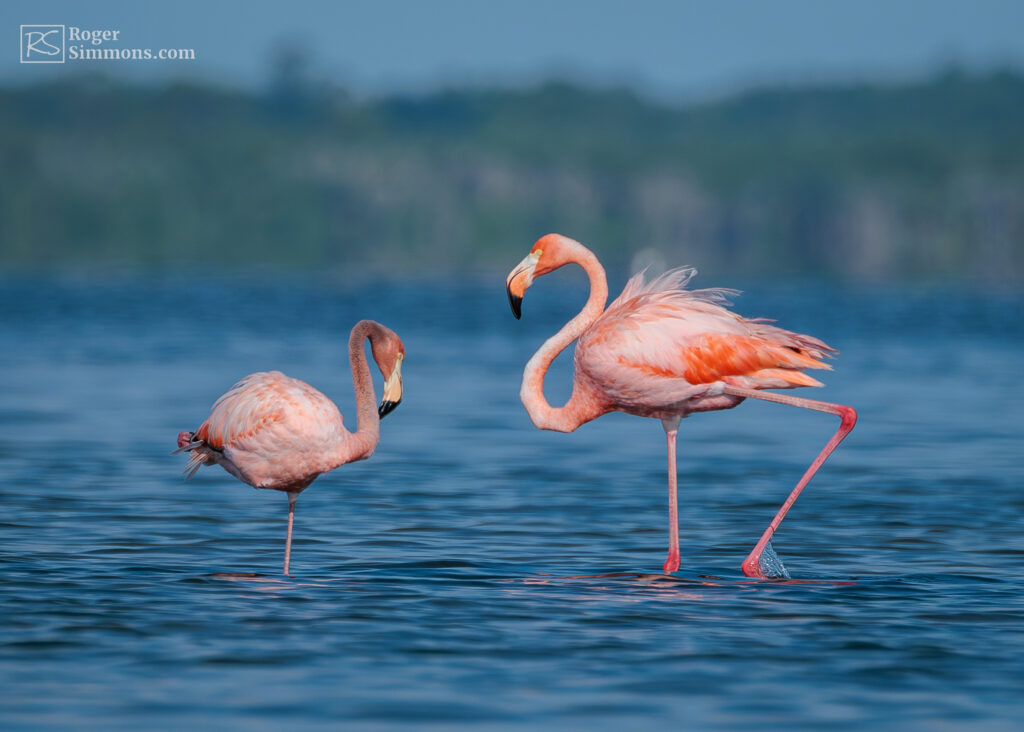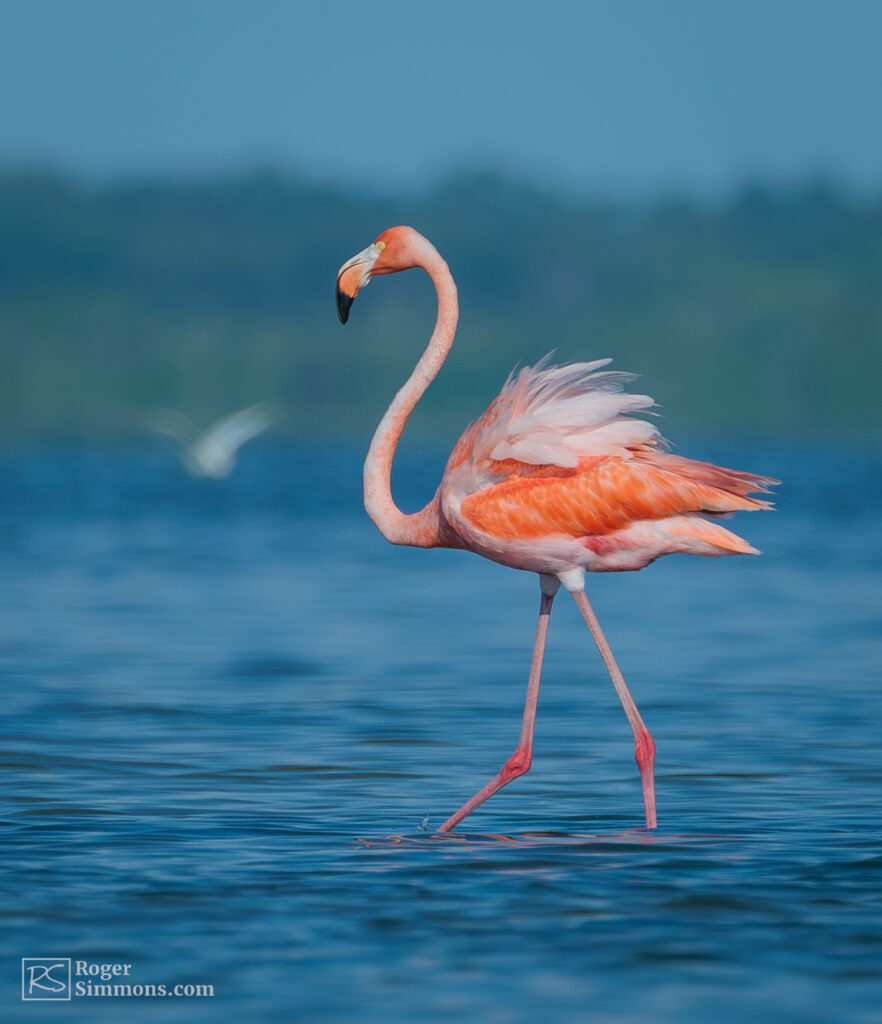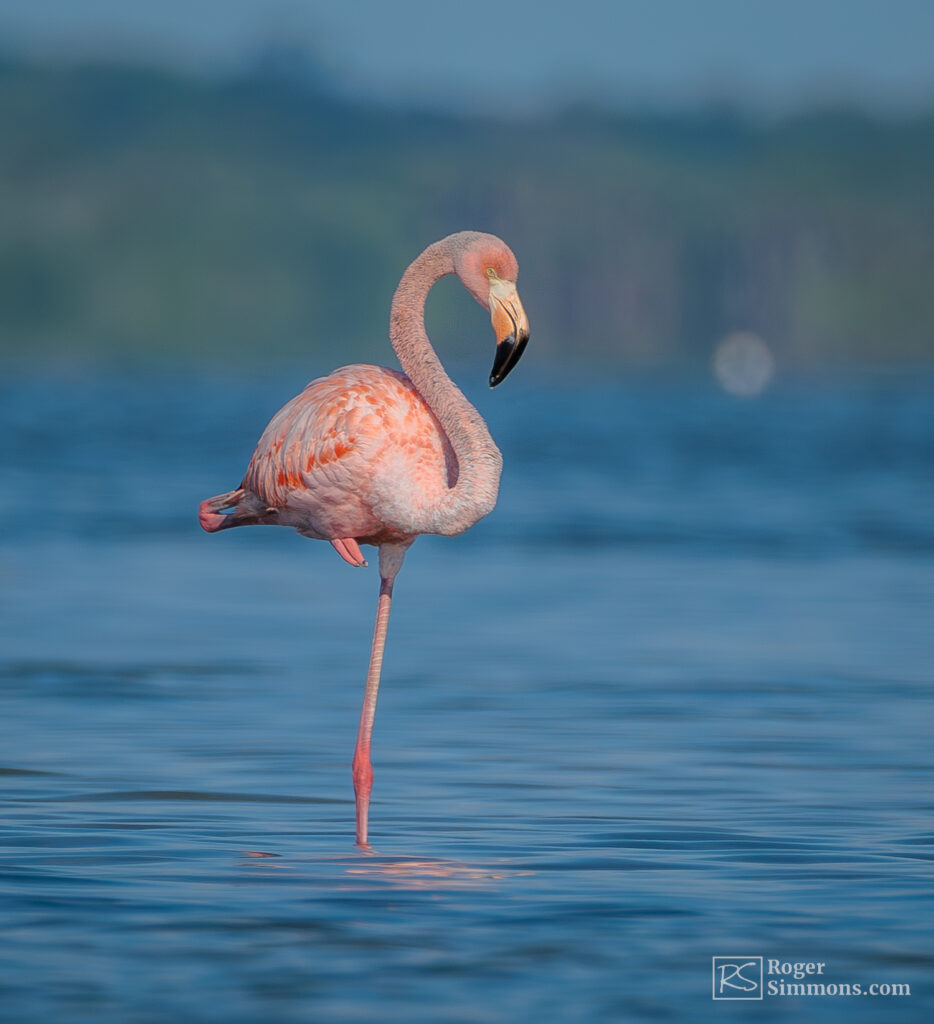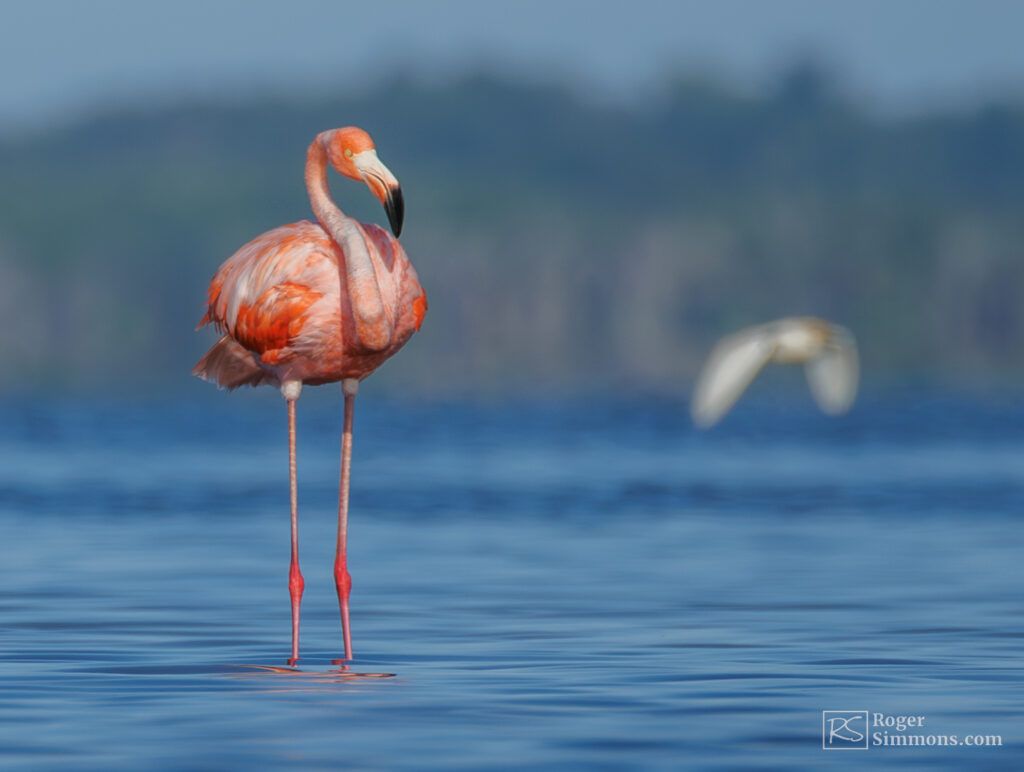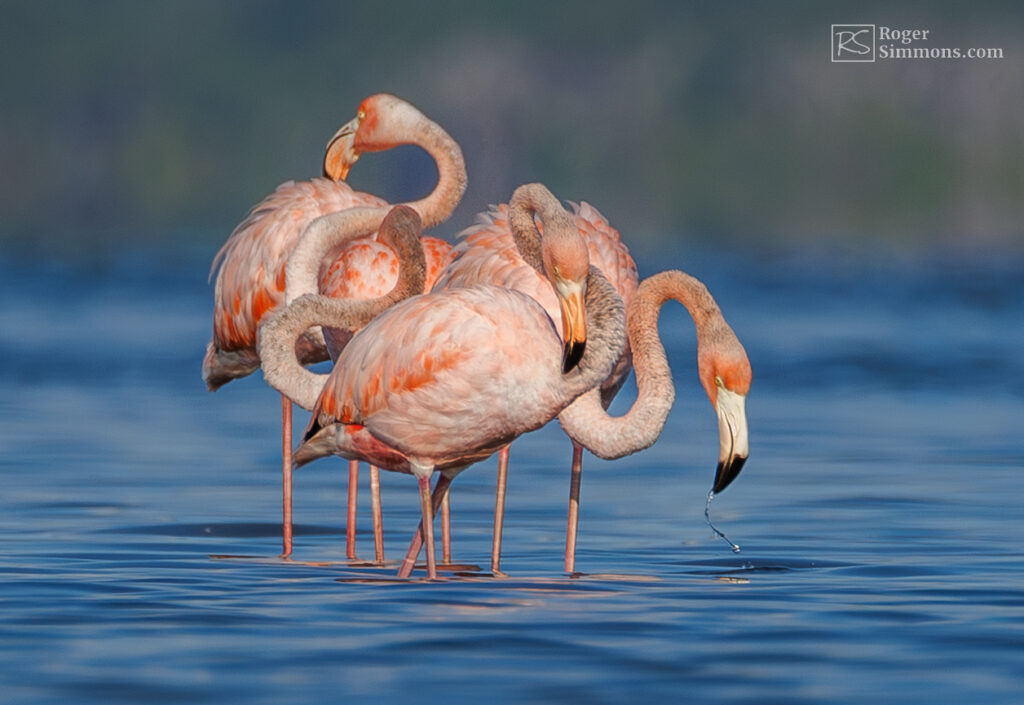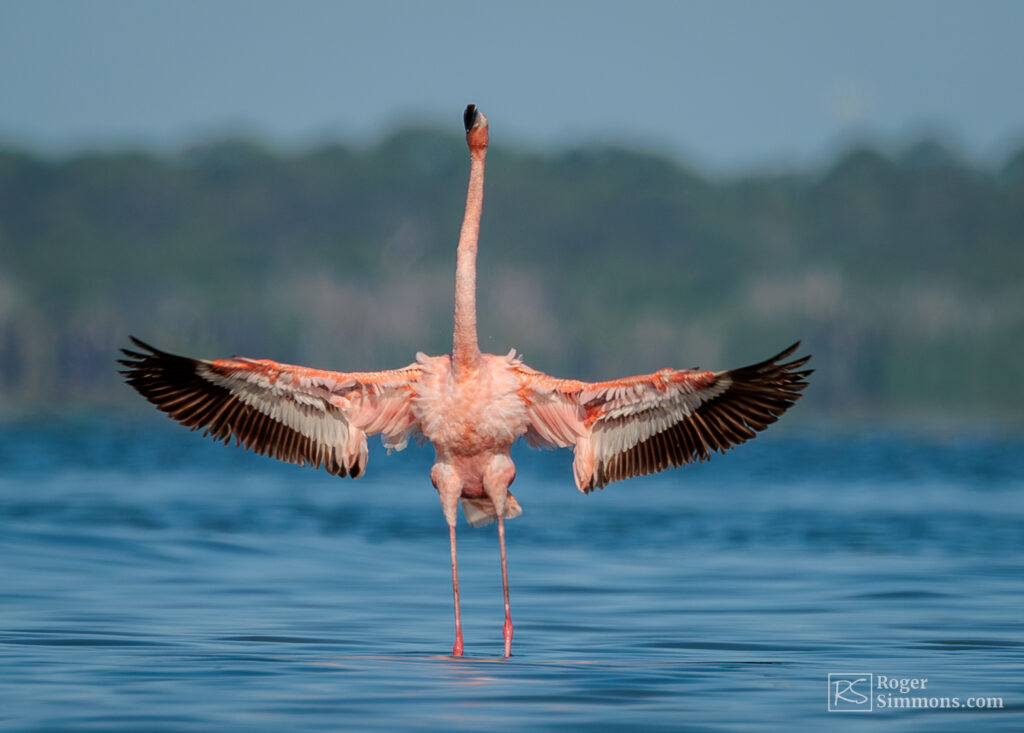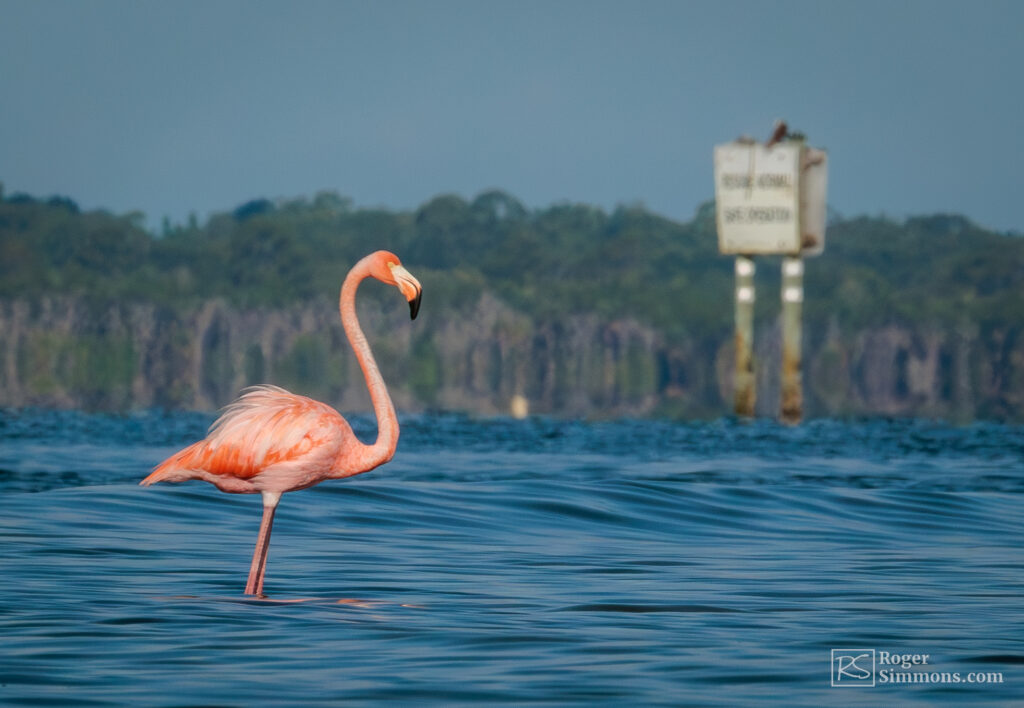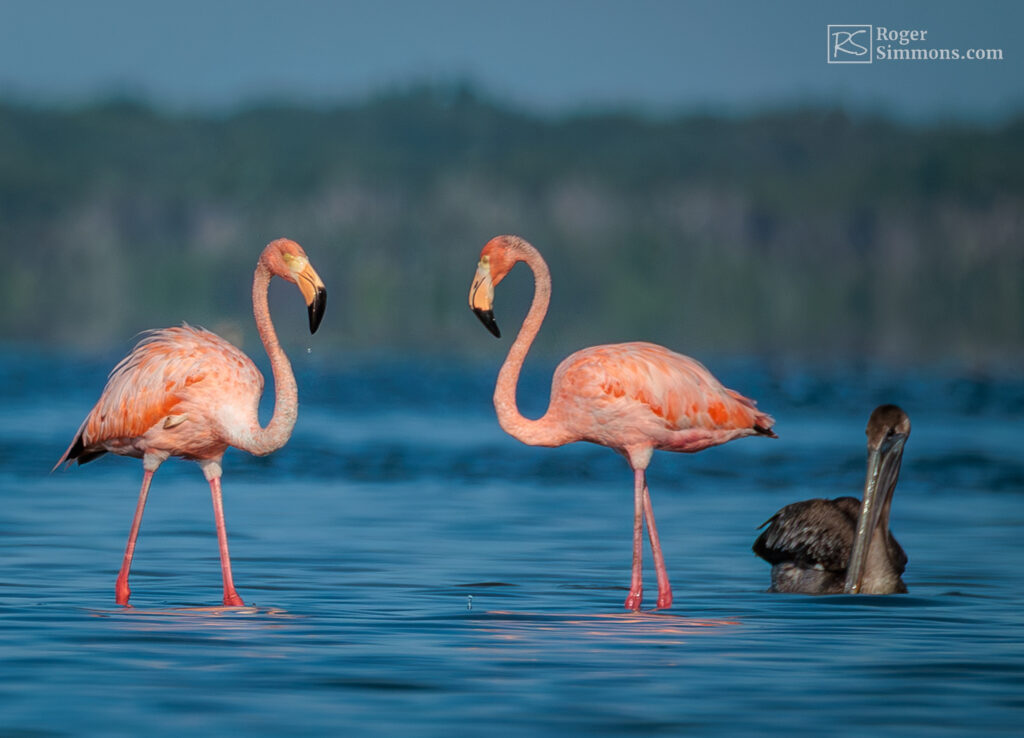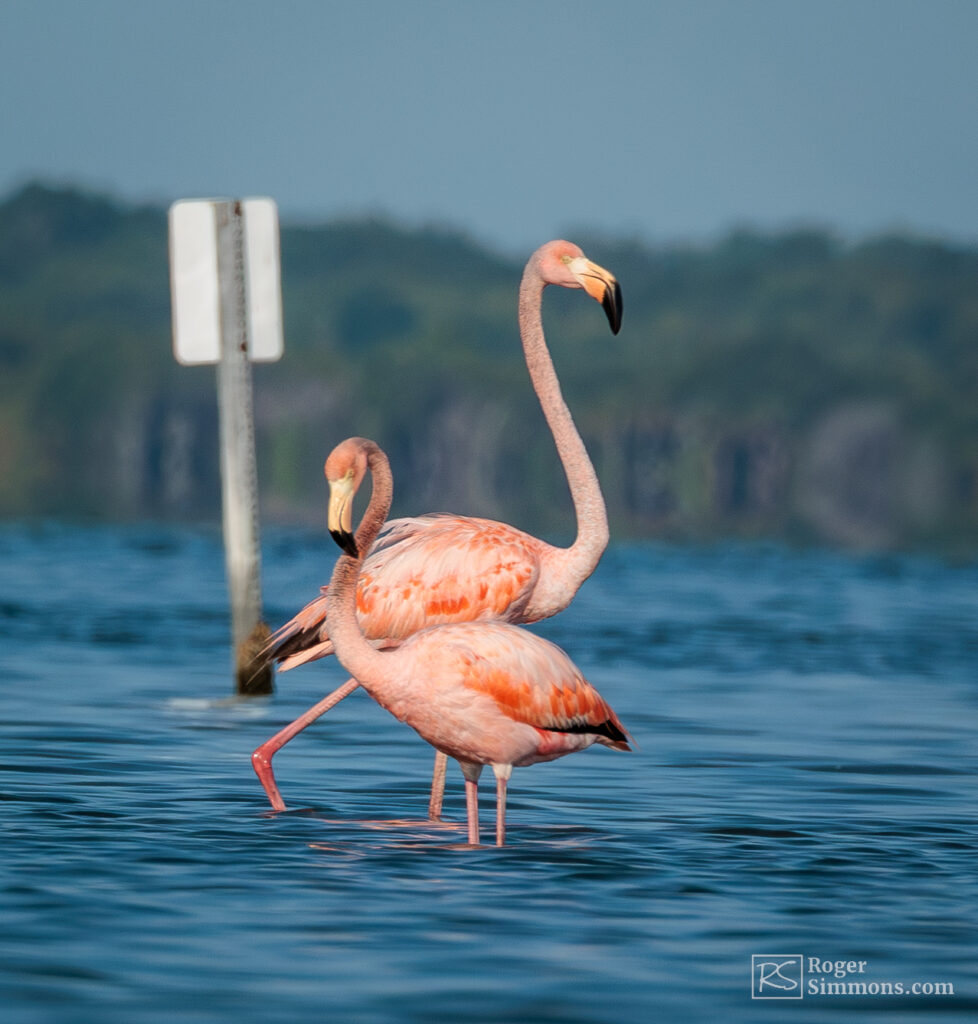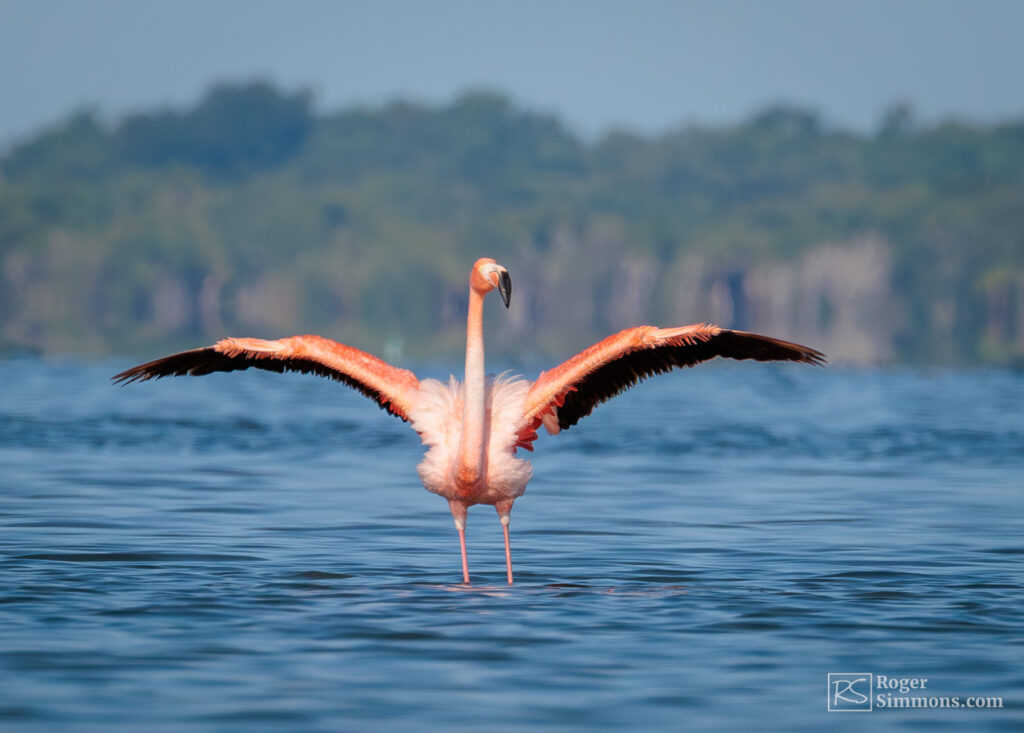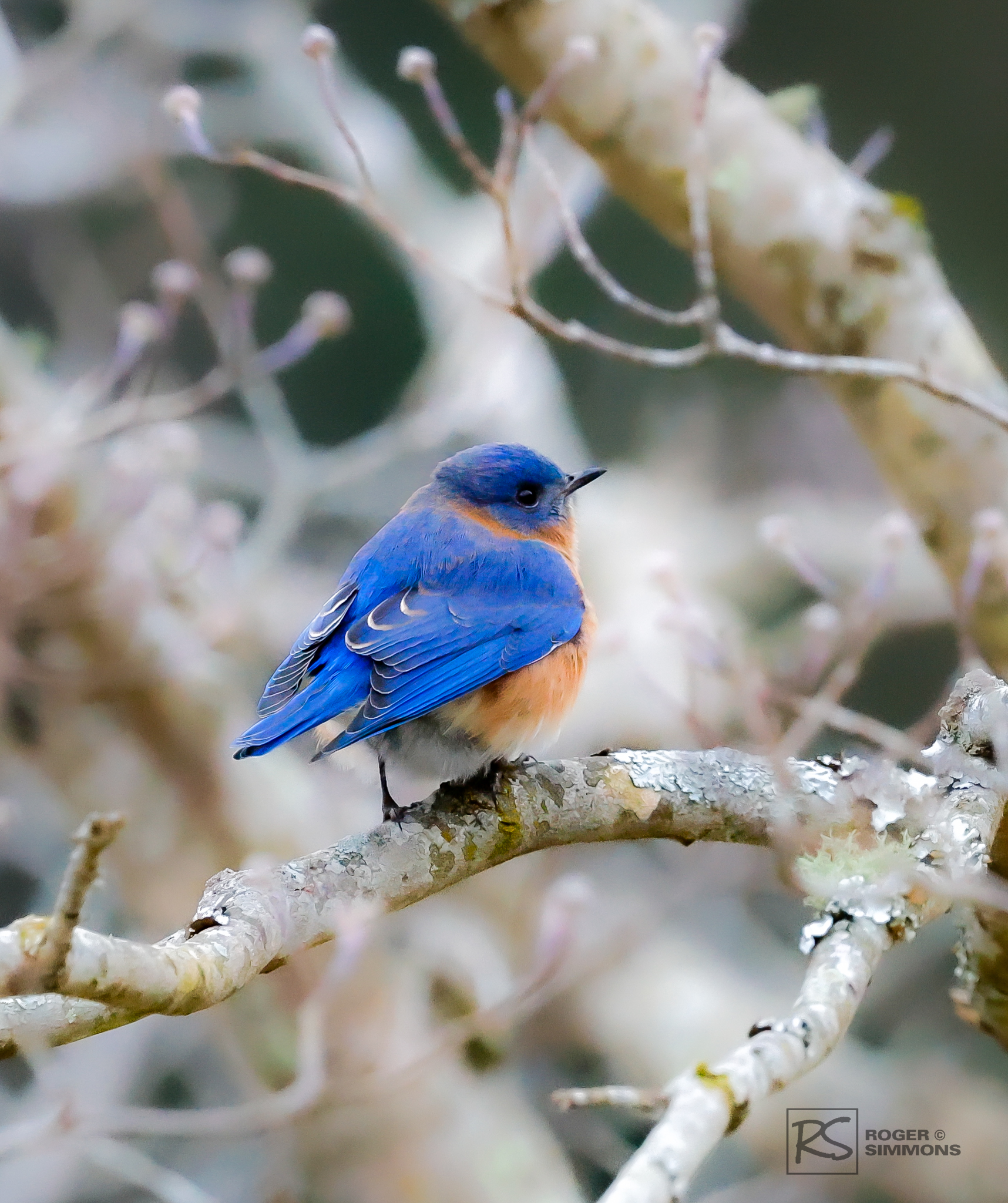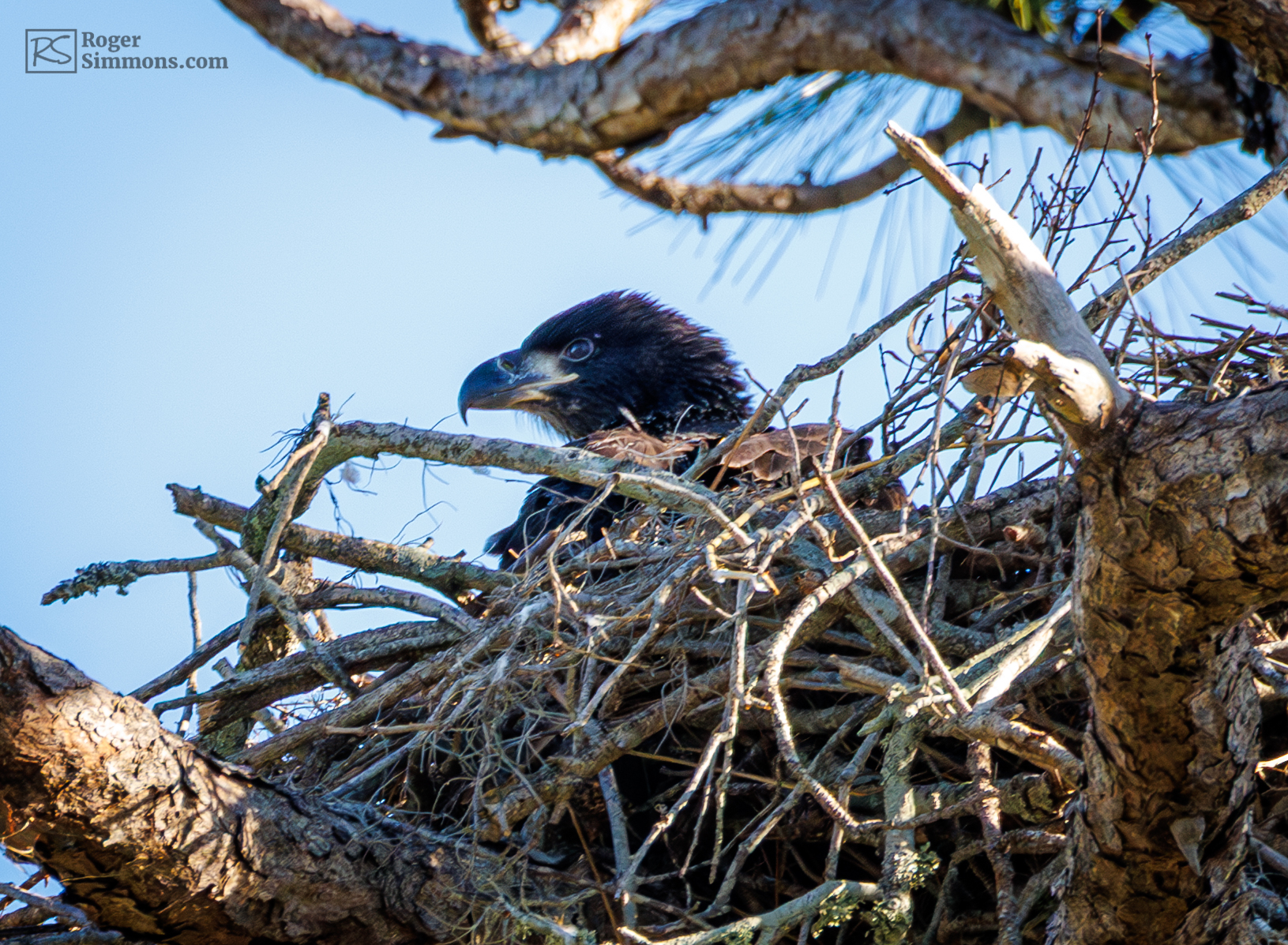It’s been almost 22 months since a group of American Flamingos started residing at the Merritt Island Wildlife Refuge following Hurricane Idalia. Their continued presence is part of an amazing story that is still being written.
I first heard about the Merritt Island flamingos on Dec. 1, 2023, when a picture of four of the birds feeding around Bird Island was posted to refuge’s Facebook birding group. I would later learn the birds had actually be in a secluded part of the refuge since September.
Dec. 2 was a Saturday, and I got up early that morning and drove to the Haulover Canal kayak launch area to see the flamingos out on Bird Island in the Indian River. I was the only person there as the sun rose, and I got some fuzzy, heavily cropped photos of the far-away pink birds before fog moved in an obscured my view.
Since that day, I’ve followed the birds’ presence at the refuge, observing their numbers rise and fall. I even bought a kayak so I could paddle out to Bird Island and get better pictures of the flamingos. I was excited to photograph their flock when it climbed to a high of 32 this spring. And on my most recent trip last Wednesday, there were still 14 flamingos at Bird Island — with others possibly in different areas of the refuge.
It’s not that unusual for birds to be displaced by storms like Idalia. A Vermilion Flycatcher and a Snow Bunting were examples of other birds being blown into the area by hurricanes last year. The big difference between them and the flamingos is that while the Vermilion and the Snow Bunting disappeared rather quickly, the flamingos decided to remain at the refuge.
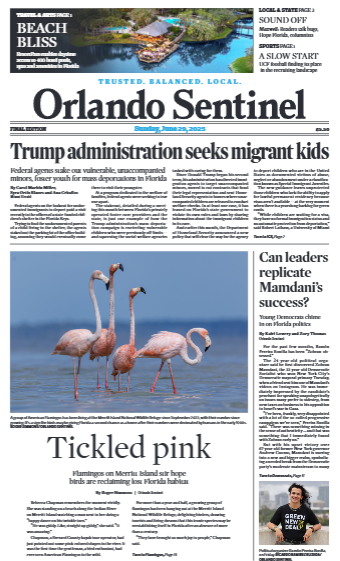
I wrote about the Merritt Island flamingos last week for the Orlando Sentinel – please give it a read if you haven’t already. Audubon Florida executive director Julie Wraithmell told me a possible reason for their decision to stay at MINWR: they like the food and the location.
“The resources must make it worth it,” she said. “They are opportunistic, and as long as the conditions remain good, they will continue to take advantage of them.”
She also suggested the Merritt Island flamingos may be younger ones who have not reached sexual maturity. Once they do, they might fly back to Mexico — or, hopefully, elsewhere in Florida — to breed in a more secluded location. But that doesn’t mean we won’t ever see these birds again.
“Is there a strong likelihood that they will come back in the non-breeding season? I would say there’s a better than average chance of that,” Wraithmell said. “You know, birds are like people, and if they have found a buffet that they particularly enjoy, they will make a date to go back with regularity.”
For the story of the Merritt Island flamingos, we don’t know when or how it will end. All of us who have been captivated by the lovely pinks birds can only hope there are many, many chapters yet to come.
Please enjoy these photos of the MINWR flamingos from last week.
